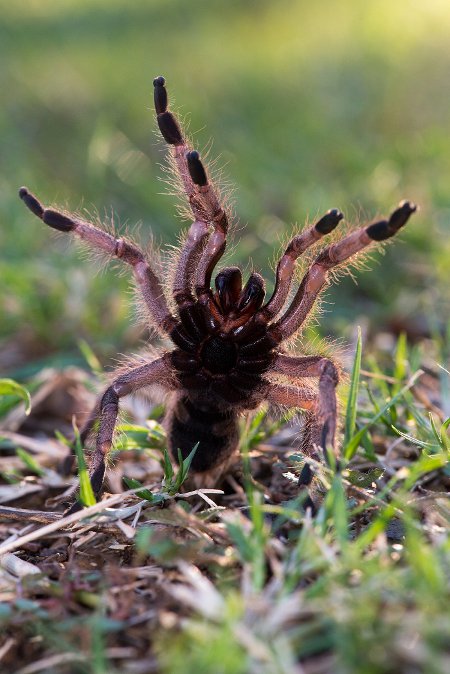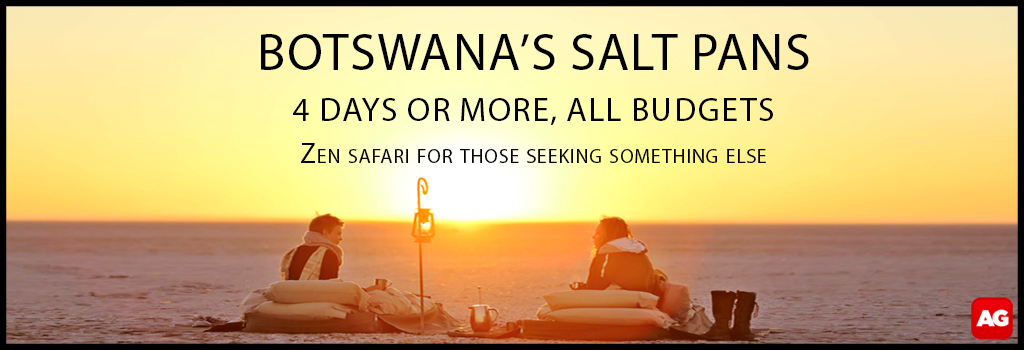Baboon spider! The name conjures up images of giant, hairy, eight-legged creatures that could be the stuff of nightmares or cheesy Hollywood horror movies. But to the contrary, baboon spiders are placid, enigmatic animals that would rather keep to themselves than risk an encounter with human beings. And believe it or not, some people are fascinated by them…

Baboon spiders are African tarantulas. They belong to a primitive group of spiders called the mygalomorphs, which also includes trapdoor spiders and several other families. The group is characterised by possessing downward striking fangs and two pairs of lungs. The spiders that most of us are familiar with; rain spiders, wolf spiders, jumping spiders, and crab spiders, belong to the more advanced group, the araneomorphs, which have opposing, pincer-like fangs and one pair of book lungs.
The distinguishing characteristic of baboon spiders is their size. They can reach a leg span of 12-15cm. Some other spiders, such as rain spiders or tropical wolf spiders, can rival this but baboon spiders are much stockier heavier animals. It is uncertain how they got their name, but it probably relates to their large, hairy appearance. The other theory is that the soft, sticky pads they have on their legs, which they use to climb smooth surfaces and grip prey, resemble the pads on a baboon’s fingers.
Baboon spiders will feed on anything they can kill. This includes a range of insects and other invertebrates, such as beetles, grasshoppers and crickets, millipedes, and even scorpions. They will also occasionally take small vertebrates like geckos or even rodents. They are the prey for a range of animals, including birds, lizards and mongooses. They have developed several interesting defence mechanisms to protect themselves. When threatened, they will raise up their front legs and body and strike aggressively at an antagonist. Many species possess special feathery structures on their mouthparts, called scopulae, which they rub together to produce a hissing sound. A hissing, striking spider can be a formidable sight.

Despite their posturing, baboon spiders are harmless to humans. They have long fangs, and they do possess large venom glands, but the bite is only painful; it causes no systemic symptoms. Furthermore, encounters with baboon spiders are rare. They prefer to live in natural habitats and rarely come into people’s gardens and houses.
So why a blog post about baboon spiders? The answer is simple, we want you, the reader, to help with baboon spider research and conservation. Last year the Animal Demography Unit launched SpiderMAP; a new Virtual Museum project to gather photographic records of African spiders, and baboon spiders in particular. Knowing the geographic distribution range of a species is critical to understanding its conservation status, habitat requirements, and impacts by humans and climate change. But for many animals, and particularly invertebrates like insects and spiders, we often only have a vague idea of the species’ geographic range. The Virtual Museum allows members of the general public to contribute to discovering species’ geographic ranges by submitting photographs of animals they see in the wild, along with precise GPS coordinates of where the animal was seen, to an online database. These records accumulate over time and gradually build a picture of the geographic range. The Animal Demography Unit has had great success with initiatives, producing authoritative publications on distributions for birds, reptiles, frogs, and butterflies. We hope to do the same for baboon spiders.
Baboon spiders are long-lived animals, with females living for as long as 15 years in the wild. They are threatened by habitat destruction and over-collecting for the pet trade. If you see a baboon spider in the wild, take a photo and submit it to the Virtual Museum. You can visit the Virtual Museum here or click here to learn more about baboon spiders.
ALSO READ Fishing spiders – small but deadly predators
To comment on this story: Login (or sign up) to our app here - it's a troll-free safe place 🙂.![]()
HOW TO GET THE MOST OUT OF AFRICA GEOGRAPHIC:
- Travel with us. Travel in Africa is about knowing when and where to go, and with whom. A few weeks too early / late and a few kilometres off course and you could miss the greatest show on Earth. And wouldn’t that be a pity? Browse our ready-made packages or answer a few questions to start planning your dream safari.
- Subscribe to our FREE newsletter / download our FREE app to enjoy the following benefits.
- Plan your safaris in remote parks protected by African Parks via our sister company https://ukuri.travel/ - safari camps for responsible travellers






